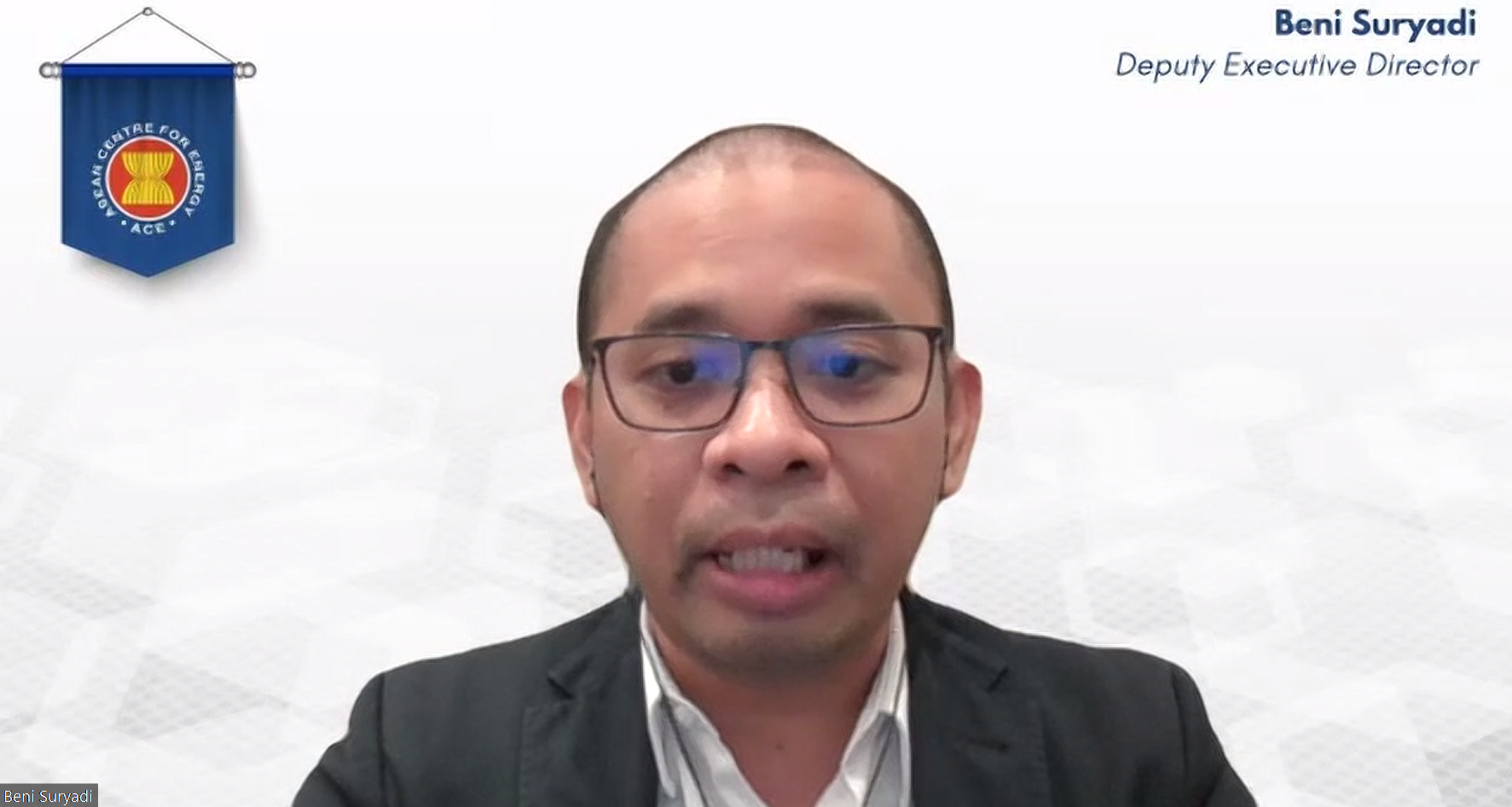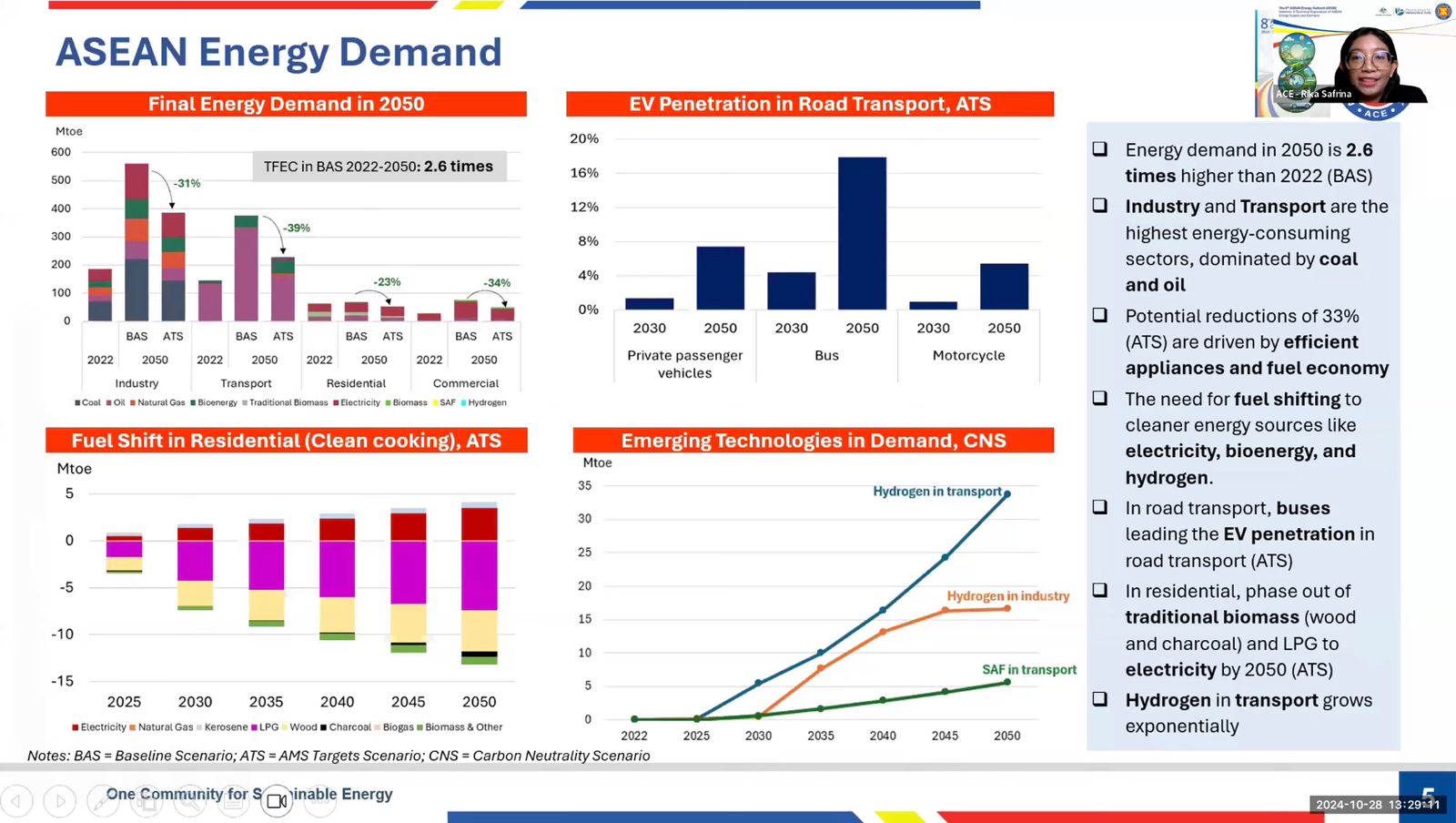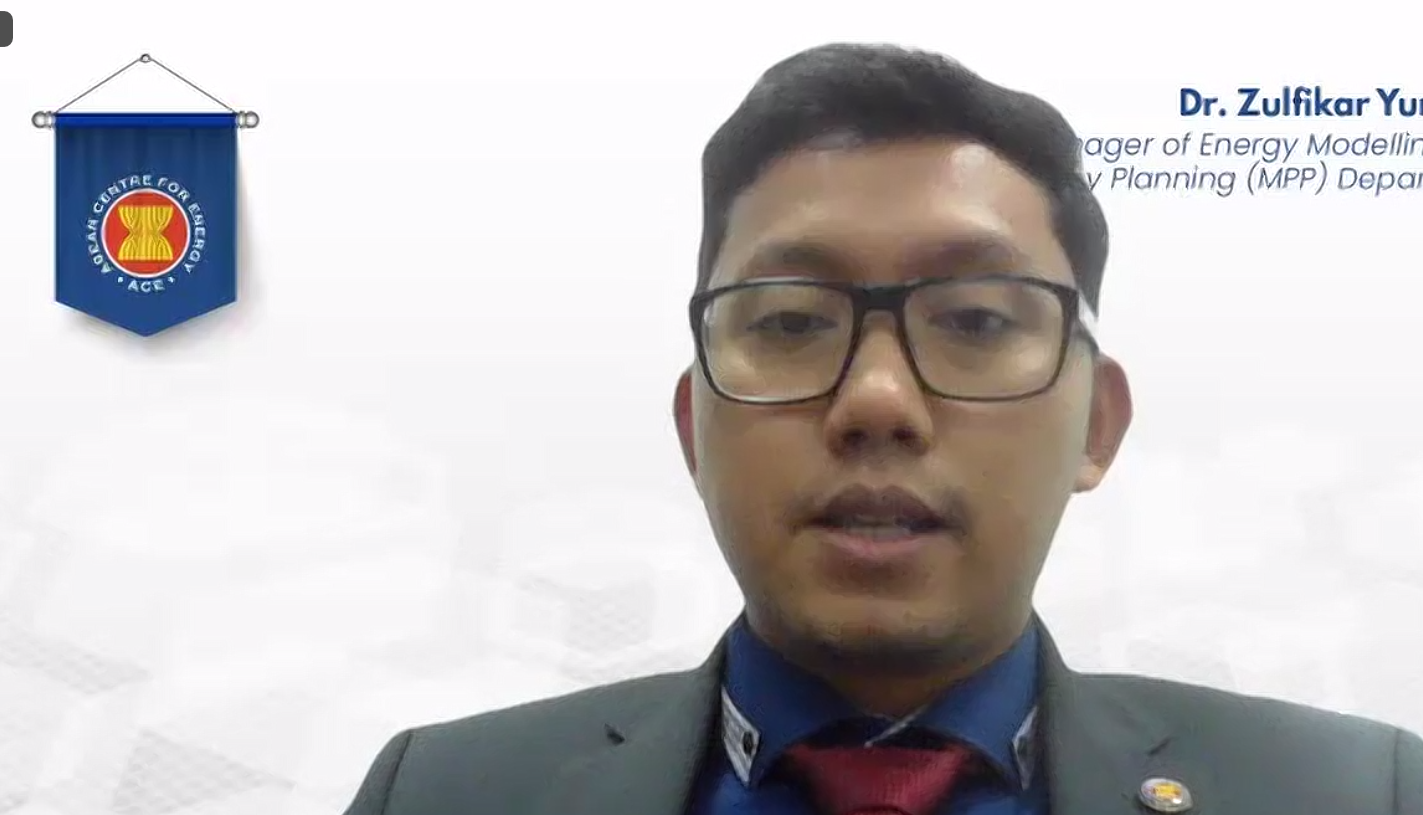Menu

Photo 1. Group photo of the First AEO8 Public Launching Webinar speakers and panellists
The ASEAN Centre for Energy (ACE), supported by the Australian Government through the Partnerships for Infrastructure (P4I), hosted the first public launching webinar of the 8th ASEAN Energy Outlook (AEO8) after its prior launching at the 24th ASEAN Energy Business Forum (AEBF-24) in Lao PDR. The first webinar focused on one of the key themes on the report, around the supply and the demand side of ASEAN’s energy outlook.

Photo 2. Opening remarks delivered by Beni Suryadi, Acting Executive Director of ACE
Beni Suryadi, Acting Executive Director of ACE, underscores the importance of AEO8 in supporting ASEAN’s shared goal, stating “As the only official energy outlook in the region, AEO8’s role cannot be overlooked and is critical for decision-makers in transforming the energy sector both in country scale and regional scale.”

Photo 3. Rika Safrina, AEO8 Team Leader, presenting the scene setting of the AEO8 report
Aiming to enhance public understanding of the report, Rika Safrina, AEO8 Team Leader, presents a scene setting titled “Navigating Energy Transition in ASEAN”, providing an overview of key findings in the report. The report projects that total final energy consumption (TFEC) will nearly grow three folds from 2022 to 2050, making energy efficiency an essential priority to address the rising demand, alongside deploying emerging technologies. Meanwhile, the region is on track to exceed the 35% renewable energy target for installed capacity, reaching 39.6% by 2025 through strong policy measures. In efforts of a smooth energy transition, ASEAN must focus on energy diversification using local resources, secure energy access, and modernise electricity grids.

Photo 4. Group photo of the First AEO8 Public Launching Webinar panellists
The presentation was followed by a panel session from distinguished experts, delivering their views on integrating variable renewable energy, the role of storage technologies, dispatchability and flexibility of supply, smart demand response, and market-based solutions through carbon pricing. the panel includes Michael Petalio, Lead Modeller of ASEAN Centre for Energy; Dr Emi Minghui Gui, Energy Transition Program Lead of Monash Energy Institute; Mrutyunjaya Nanda, Lead Technology and Markets Team of Asia Clean Energy Partners; and Kyohei Yoshinaga, Centre for Policy and the Economy Consultant of Mitsubishi Research Institute Inc. A notable takeaway was that the panellists agreed on three main barriers to deploying emerging technologies for supply-demand balance: cost, technical knowledge, and regulatory issues. Given these challenges, it is important to, firstly, acknowledge that each country have different level of readiness. Following that, countries should optimise their existing RE sources to reach economic viability, parallel by financial and human capital supports from governments and international partners.

Photo 5. Closing remarks delivered by Dr Zulfikar Yurnaidi, Head of Department of ACE
The event was wrapped up with closing remarks from Dr. Zulfikar Yurnaidi, Head of Modelling and Policy Planning (MPP) of ACE, which further highlights how the report is a key reference for ASEAN’s energy transition journey, stating “We are currently ending our ASEAN Plan of Action for Energy Cooperation, or APAEC, cycle, and working on the next cycle of APAEC for 2026 until 2030, with a vision until 2045. I do believe that the development of the ASEAN Energy Outlook would play a critical role in designing this next cycle of APAEC.”
The AEO8 serves as a strategic guide, emphasising energy as a multisectoral issue that requires multifaceted approaches. By providing projections and analysis, the report acts as a reference for balancing rising energy consumption, driven by ASEAN’s economic growth, with sustainability goals.
To access the full report, please visit go.aseanenergy.org/AEO8
